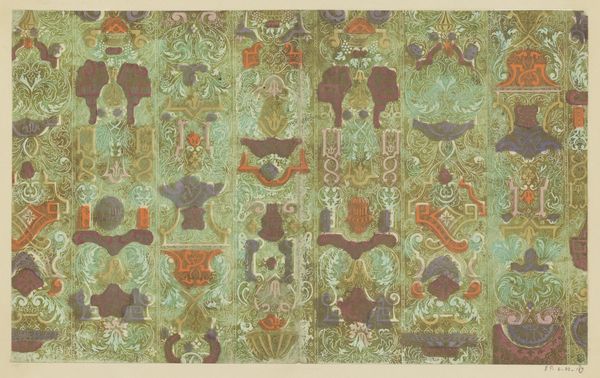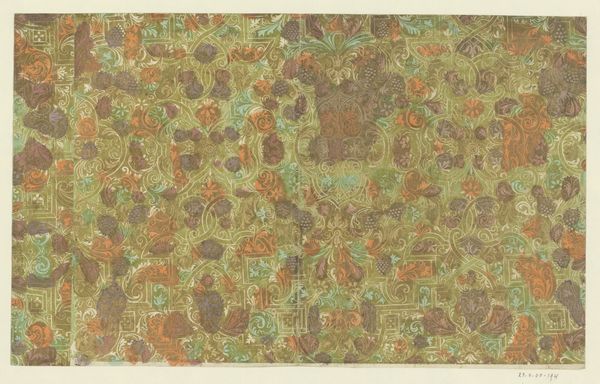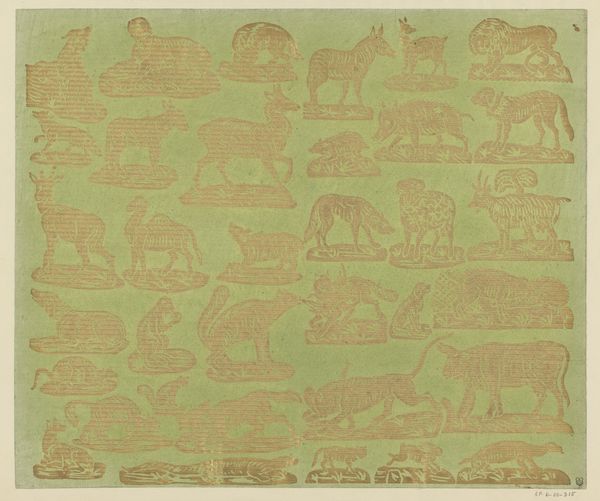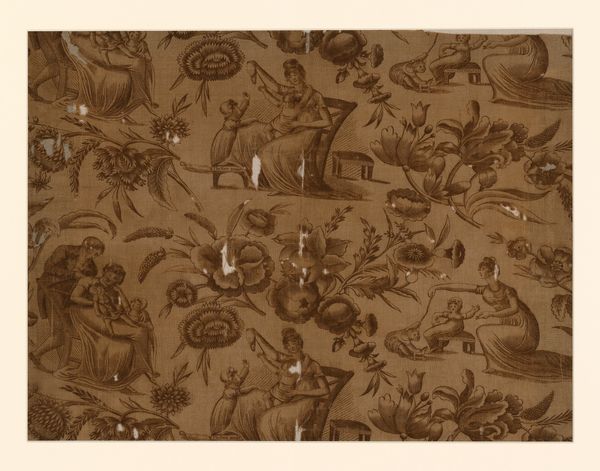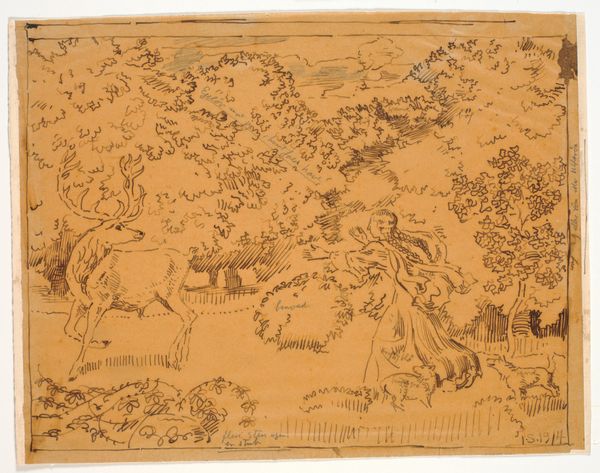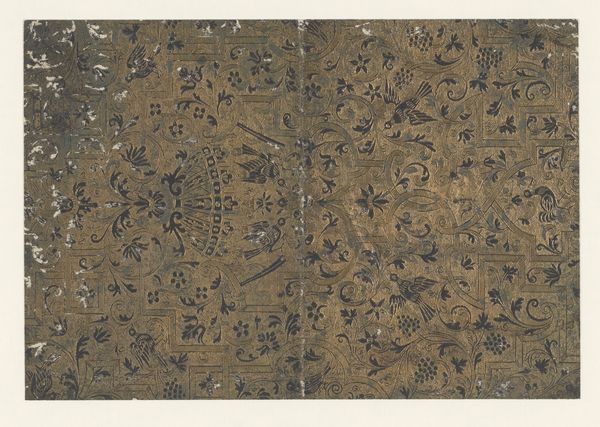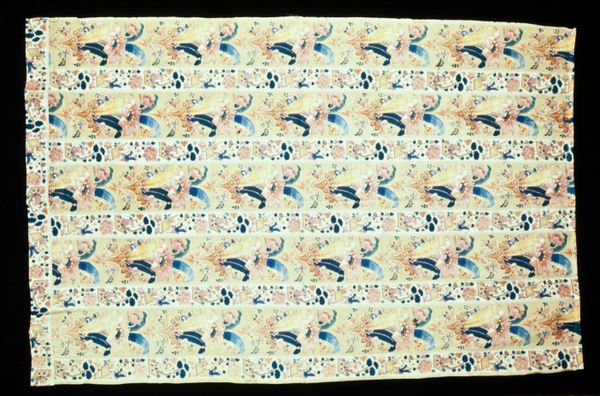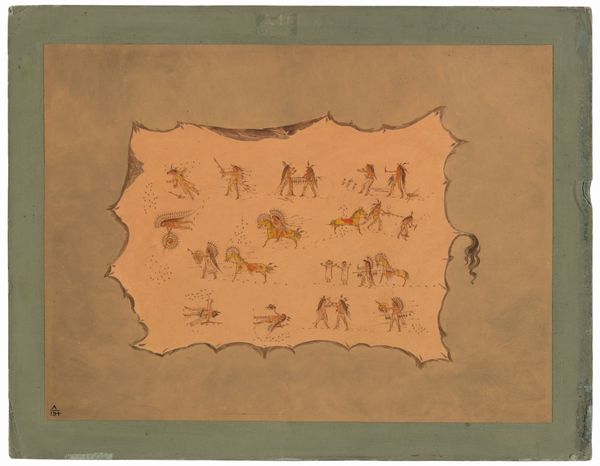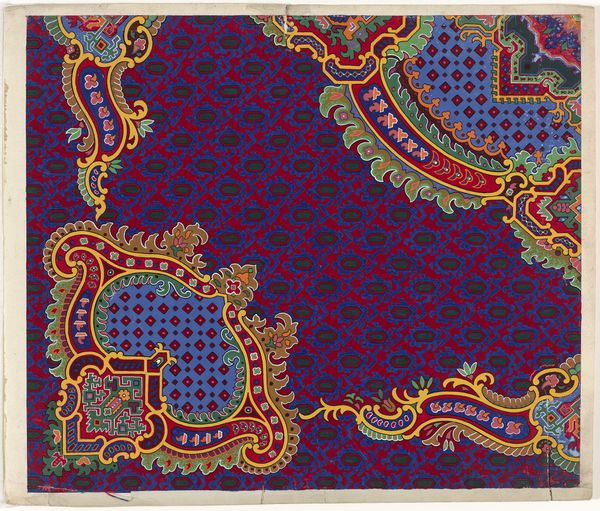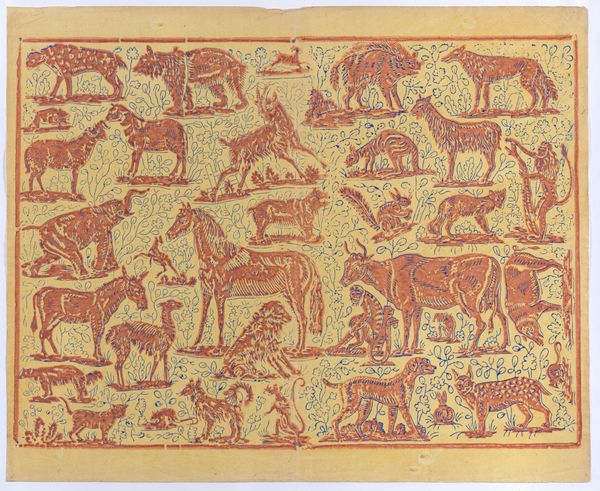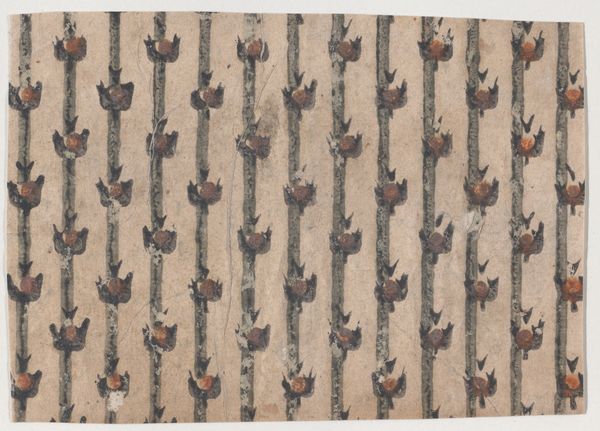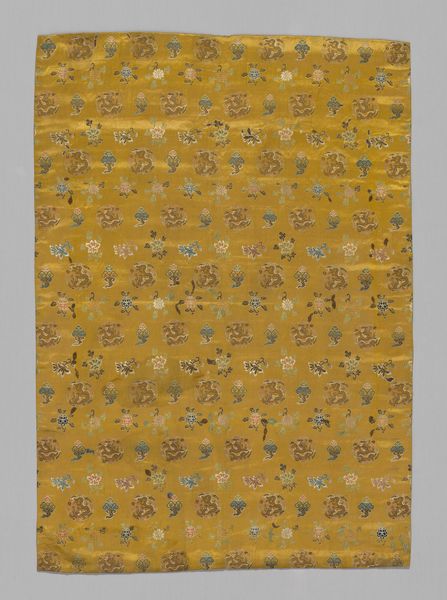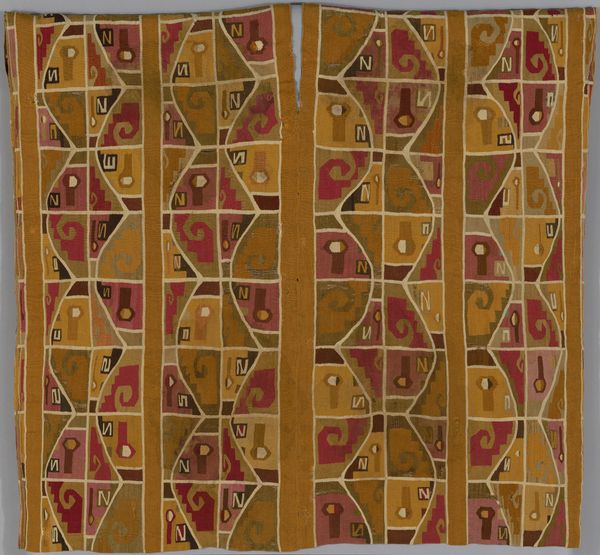
Scenes from the Thiri Rama, the Burmese adaptation of the Ramayana 1870 - 1885
0:00
0:00
textile
#
narrative-art
#
asian-art
#
textile
#
folk-art
Dimensions: Image: 79 in. × 14 ft. 7 1/2 in. (200.7 × 445.8 cm)
Copyright: Public Domain
Editor: This textile piece, "Scenes from the Thiri Rama," the Burmese adaptation of the Ramayana, was created between 1870 and 1885 by U Paw Hnyun. The detail is incredible! What first strikes me is the composition – it's organized in these horizontal registers, almost like a comic strip. It seems quite busy, visually. What do you see in its structure and design? Curator: Indeed. Notice how the artist employs a distinct hierarchical organization within the composition. Each register functions as a self-contained episode, yet they are linked by recurring visual motifs – the stylized trees, the figures arranged in procession. Observe how the black background functions not merely as empty space, but as a field which actively shapes and defines the forms embroidered upon it. It throws into sharp relief the variations in light and dark created by the stitching. Editor: That makes sense. It’s almost like the negative space becomes a character itself, directing our eye. What do you mean? Curator: The negative space allows the eye to concentrate on each event independently before scanning the whole panel. If the ground had been brightly lit it might all become visually homogenous. The contrast of dark and light is critical in appreciating not just the narrative structure but the aesthetic value of the materials. Consider the embroidery – the varied stitching creates textural differences which add to the symbolic weight of different actors or the drama of distinct scenes. Editor: So it's the interplay of all these elements—the register, the colors, the medium, the textures—that contributes to the narrative. I initially saw just a busy textile, but now I see a carefully structured story told through form. Thank you. Curator: Precisely. By analyzing these internal relationships, we can move towards a richer understanding of both the artistic process and intended experience of the artisan and the viewers.
Comments
No comments
Be the first to comment and join the conversation on the ultimate creative platform.
